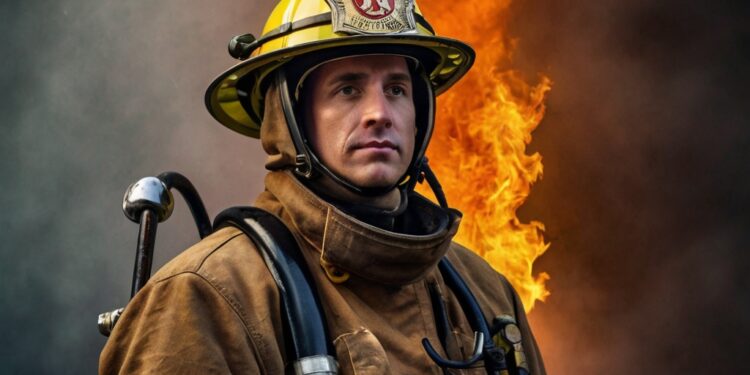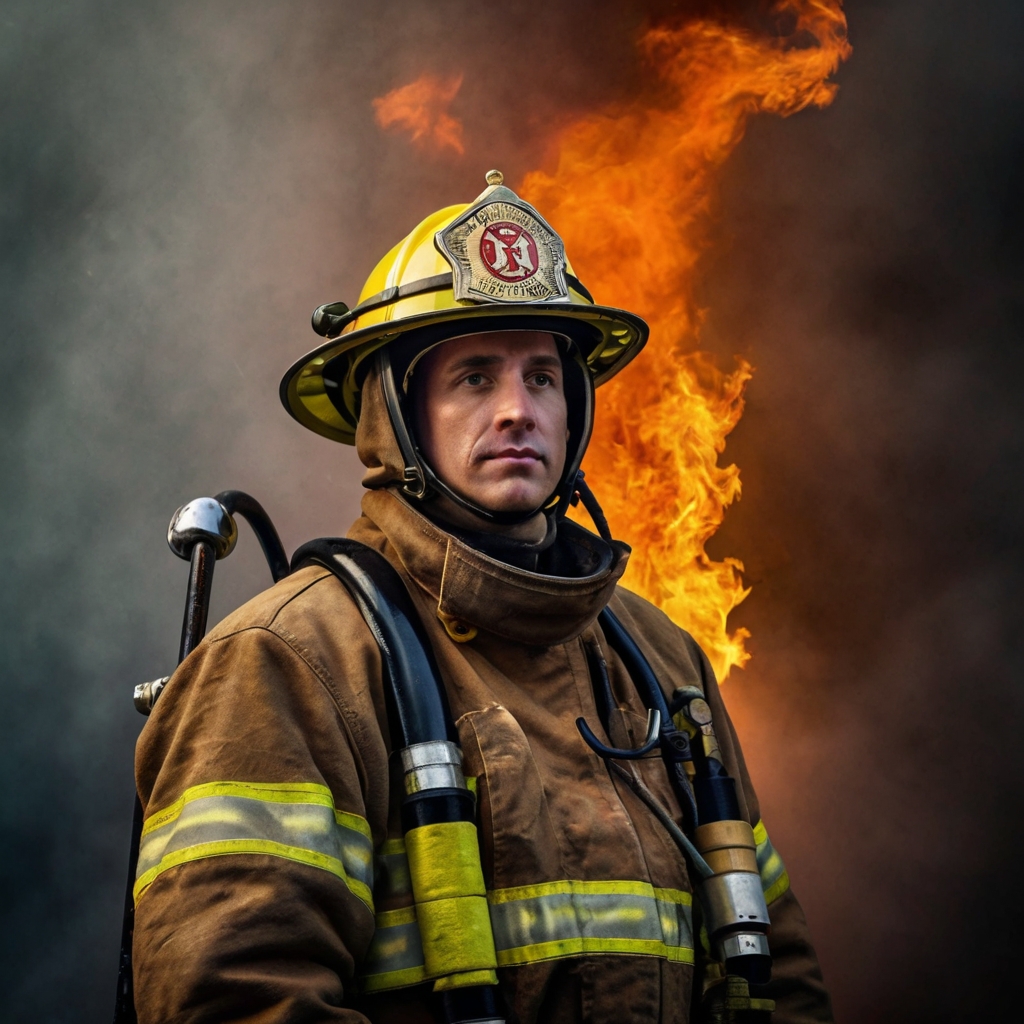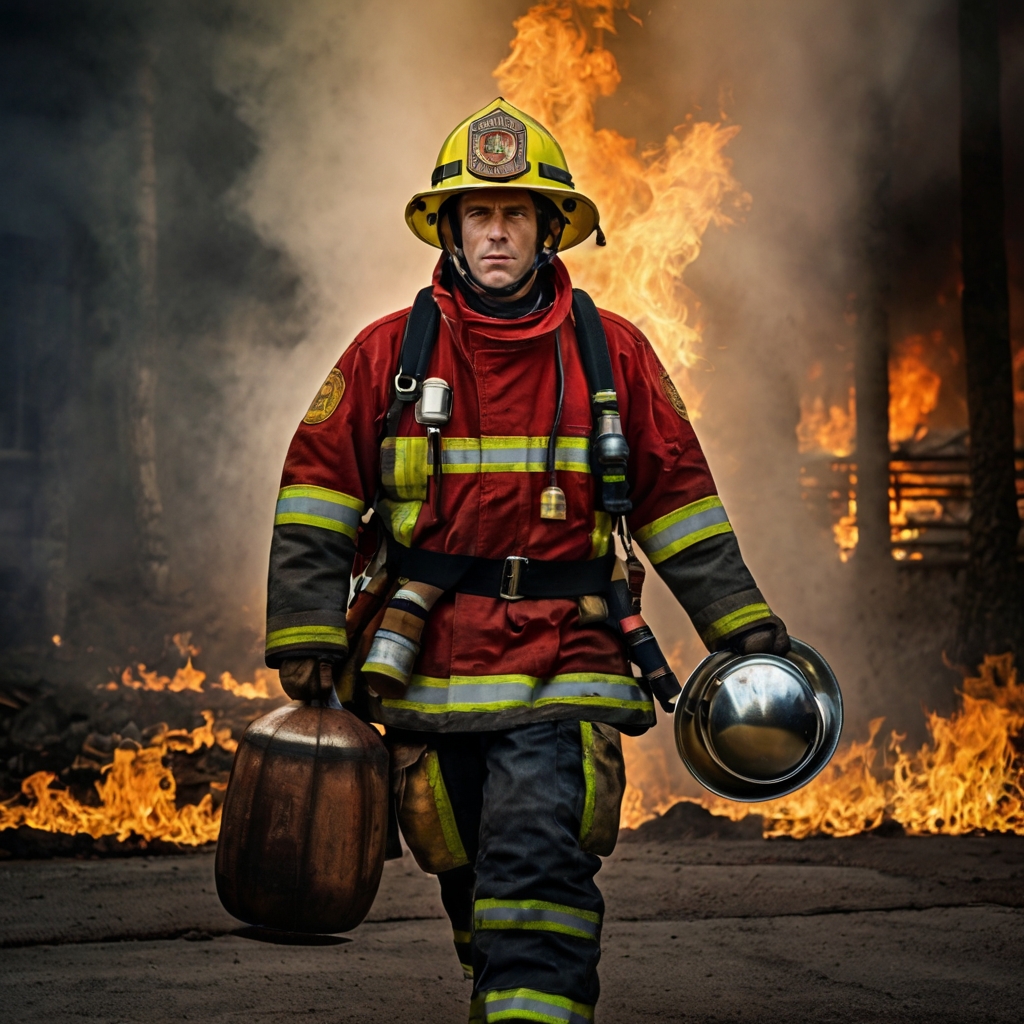Patron Saint of Firefighters

Thousands of firefighters put their lives on the line each day to protect others. This noble profession traces its roots back to the third century and embodies a tradition of selfless service. St. Florian, the patron saint of firefighters, stands at the core of this heritage and continues to inspire emergency responders everywhere.
St. Florian became the patron saint of firefighters because of his extraordinary courage during his time in the Roman army. His legendary feats included saving burning buildings with just one bucket of water. His steadfast dedication to protecting others has made him a powerful symbol that brings hope to firefighting communities worldwide.
St. Florian’s impact reaches way beyond the reach and influence of religious boundaries. His spirit lives on through the sacrifices of firefighters, EMTs, and first responders who serve their communities. The medals, symbols, and traditions that honor his memory continue to unite and inspire firefighting forces around the world.

Table of Contents
- 1 The Life and Legacy of St. Florian
- 2 Miraculous Acts of Protection
- 3 Symbol of Courage and Service
- 4 Impact on Modern Firefighting
- 5 Living St. Florian’s Values Today
- 6 Here are some FAQs about the patron saint of firefighters:
- 6.1 Why is Saint Florian the patron saint of firefighters?
- 6.2 Who is the archangel for firefighters?
- 6.3 What does “St. Florian protect us” mean?
- 6.4 Who is the god of firefighters?
- 6.5 Does Saint Michael protect firefighters?
- 6.6 What are some interesting facts about St. Florian?
- 6.7 Who is the female god of fire?
- 6.8 What is the prayer to St. Florian?
- 6.9 Who is the guardian of fire?
The Life and Legacy of St. Florian
St. Florian was born in the Roman city of Aelium Cetium (modern-day Sankt Pölten, Austria) around 250 AD. His trip from a Roman military officer to becoming the patron saint of firefighters shows his exceptional leadership and steadfast dedication.
Early Life as a Roman Commander
St. Florian started his military career by joining the Roman army as a young man. He quickly stood out through his dedication and leadership abilities. His superiors recognized his exceptional qualities: strong people skills, problem-solving abilities, and remarkable work ethic. These qualities helped him advance rapidly through the ranks. He ended up becoming the commander of the Imperial army in the Roman province of Noricum.
Leadership in Firefighting Brigades
St. Florian transformed firefighting operations within the Roman army during his time as military commander. He hosted training for an elite group of soldiers who focused only on fighting fires. His leadership brought several notable achievements to the Roman firefighting force:
- The force was 304 AD old with specialized medical staff for firefighting units
- Teams used hand-operated piston water pumps
- More than 7,000 highly trained firefighters served under his command
Standing Firm in Faith
Christianity faced severe persecution throughout the Roman Empire during Emperor Diocletian’s reign. St. Florian refused to enforce anti-Christian edicts in his territory despite his high rank. He boldly declared when confronted about his disobedience, “Tell the emperor that I am a Christian and will suffer the same fate as the Christians”.
His steadfast dedication to faith led to his martyrdom in 304 AD. St. Florian showed remarkable courage at the time of his death sentence by fire. He challenged his executioners with the words, “If you wish to know that I am not afraid of your torture, light the fire and I will climb to heaven on the flames”. The soldiers chose not to burn him. Instead, they tied a millstone around his neck and drowned him in the Enns River.
A Christian woman named Valeria recovered his body and gave him a proper burial at a nearby monastery. His remains were later moved to the Augustinian Abbey in modern-day Linz, Austria. The remains became a symbol of steadfast dedication to service.
Miraculous Acts of Protection
St. Florian’s miraculous acts of protection throughout history have made him a powerful protector against fire and water dangers. His extraordinary interventions have cemented his role as the patron saint of firefighters. Fire service communities worldwide draw inspiration from his legacy.
The Famous Single Bucket Miracle
The most famous miracle linked to St. Florian tells how he saved a whole town from a devastating fire with just a single pitcher of water. This extraordinary feat showed his supernatural power to shield communities from fire’s destruction. Artists have immortalized the miracle of the single bucket in countless works, showing St. Florian with his signature water pitcher.
Protection of Towns and Villages
St. Florian’s protective influence reached way beyond his lifetime. A remarkable example happened in 1528 when a devastating fire swept through Krakow but spared St. Florian’s Church. This event sparked intense devotion to St. Florian, especially in Poland and across Europe. Many communities have asked for his help during urban fires and credit their survival to his divine intervention.
Modern Day Miracles
St. Florian’s protection lives on in modern times. His statue stood strong in front of Vienna’s main firehouse despite heavy bombing during World War II. Firefighters around the world still report cases where they believe St. Florian protected them. His influence shows up clearly in these documented modern miracles:
- Protection against fires, floods, and lightning strikes
- Miraculous survivals reported by firefighters in dangerous situations
- Preservation of churches and communities during natural disasters
People worldwide recognize St. Florian’s protective power. International Firefighters’ Day falls on May 4th, St. Florian’s feast day. This global celebration reflects the lasting belief in his miraculous intervention and protection of firefighters. People still ask for his help through special litanies and prayers, especially during crisis or danger.
Symbol of Courage and Service
The symbolic Florian Cross stands as a powerful emblem that represents courage and dedication in firefighting services worldwide. This unique symbol shows four triangular arms of equal length that taper toward a central circle. It reminds us of St. Florian’s values.
The Florian Cross Meaning
People often mistake the Florian Cross for the Maltese Cross. The symbol has several distinct features:
- Rounded edges at the center
- Eight-point structure
- Arched outer edges
- Equal-length triangular arms
This symbol emerged in the 4th century and now appears on fire department emblems throughout North America and Europe. The cross symbolizes protection from fire and represents the firefighting profession’s core values of integrity, bravery, and honor.
Traditions Among Firefighters
St. Florian’s impact reaches beyond mere symbols. Fire departments worldwide celebrate his legacy through various customs. Firefighters wear St. Florian medals with the inscription “St. Florian Protect Us”. Many departments create specialized medals that feature their department initials and firefighter badge numbers while incorporating the traditional cross design.
Austrian and German fire stations use “Florian” as their official radio call sign for fire stations and engines. This practice shows how deeply St. Florian’s legacy remains rooted in modern firefighting culture.
Global Recognition
Since 1999, the international firefighting community has celebrated St. Florian’s feast day on May 4th as International Firefighters’ Day. This worldwide celebration includes unique traditions. Firefighters wear blue and red ribbons that represent the water and fire elements they work with daily.
Austria and southern Germany show strong connections to the saint. Local fire stations display his image through paintings, statues, or niches above their entrances. The National Society of St. Florian honors this heritage by recognizing people who show exceptional professional skills and selfless service in emergency response.
St. Florian’s enduring symbols and traditions continue to inspire firefighters everywhere. His cross remains a powerful symbol of the courage and dedication needed in firefighting. These values surpass international, political, and linguistic boundaries.
Impact on Modern Firefighting
St. Florian, the patron saint of firefighters, shapes modern firefighting through innovative training, volunteer work, and community programs. His influence goes way beyond religious symbolism and shows up in practical ways that define today’s fire service.
Volunteer Firefighting Spirit
St. Florian’s legacy of selfless service lives on in volunteer firefighting programs worldwide. Today’s volunteer firefighters show their dedication through innovative programs like the “Bunker Program.” Volunteers live at fire stations and stay ready to respond to emergencies instantly. These programs now include complete training initiatives. Volunteers complete hundreds of hours of specialized instruction to serve their communities well.
Training and Leadership Principles
Modern firefighting training draws from St. Florian’s military background and leadership philosophy. Today’s training programs focus on:
- Advanced fire suppression techniques and specialized certifications
- Rapid intervention training to rescue fellow firefighters
- Leadership development and administrative skills
- Vehicle rescue and emergency response protocols
The National Society of St. Florian honors people who show exceptional professional skills and leadership. Members must uphold the highest standards of integrity and moral character in emergency response. This organization promotes awareness and support for emergency responders’ challenges, living up to the saint’s principles of service and sacrifice.
Community Service Values
St. Florian’s values run deep in modern firefighting’s community service approach. Fire departments worldwide follow his principles of prevention and protection through complete community safety programs. The St. Florian Fire and Burn Foundation, 30 years old, shows these values through:
- Educational outreach programs to prevent fires
- Support services for burn survivors
- Community safety initiatives
- Youth engagement programs
Fire departments merge St. Florian’s teachings with their daily operations. They focus on both emergency response and community education. European fire services use “Florian” in their radio communications to coordinate emergency responses. This ground application of his legacy shows how historical values shape modern firefighting protocols.
Fire departments do more than fight fires. They build communities and run prevention programs. Many organizations now offer specialized training that combines technical skills with community involvement. This complete approach to public safety would have made St. Florian proud.

Living St. Florian’s Values Today
St. Florian’s timeless values shape the character and conduct of modern firefighters worldwide. The National Society of St. Florian upholds these enduring principles and recognizes individuals who show exceptional professional competence and selfless service in emergency response.
Selfless Service Examples
Modern firefighters carry St. Florian’s spirit of sacrifice through daily acts of service that go way beyond the reach and influence of emergency response. The First Responders Foundation celebrates firefighters, police officers, and EMTs who uphold the highest standards of integrity, bravery, and moral character. These dedicated professionals channel their wealth and influence to help those in need, much like St. Florian’s example of charitable works.
Faith in Action
Faith and service remain the life-blood of many fire departments where chaplains provide spiritual and emotional support to firefighters and emergency victims alike. Their presence brings comfort during crisis situations and reflects St. Florian’s legacy of steadfast dedication in adversity. Fire department chaplains help people of all faiths and project calmness during chaotic emergency operations.
Building Stronger Communities
Modern fire services build stronger communities through initiatives that embody St. Florian’s values:
- Community education and prevention programs
- Youth engagement and mentorship opportunities
- Mutually beneficial alliances with local organizations
- Support services for vulnerable populations
These programs create lasting positive change in communities beyond immediate emergency response. Fire departments mobilize residents to take collective action and promote civic responsibility and democratic values. Their efforts prove that St. Florian’s principles of service and protection stay relevant in modern society.
Fire departments nationwide take an all-encompassing approach to community building. They blend emergency response with broader social initiatives and support activities that match each neighborhood’s unique characteristics. Local individuals, associations, businesses, and faith-based entities work together. This shared approach creates stronger, more resilient communities that embody their patron saint’s selfless spirit.
Service dedication shows in training programs that emphasize both technical skills and community participation. Departments now offer specialized courses that combine traditional firefighting techniques with modern community-building strategies. St. Florian’s legacy of protection and service continues to evolve with today’s needs.
St. Florian’s remarkable legacy has shaped firefighting services around the world for seventeen centuries. His story goes beyond religious boundaries and reminds us that courage, sacrifice, and steadfast dedication are vital qualities every modern emergency responder needs.
Fire departments worldwide make St. Florian’s principles come alive through community programs, volunteer work, and complete training methods. They show us daily that his core values of protection, service, and faith help them tackle today’s challenges and create stronger communities.
Countless firefighters keep St. Florian’s spirit alive as they risk their lives to protect others. These brave men and women mirror the saint’s selfless service and create lasting positive change through their community work. Modern emergency responders prove that St. Florian’s legacy isn’t just a historical inspiration – it’s a practical blueprint for public service today.

